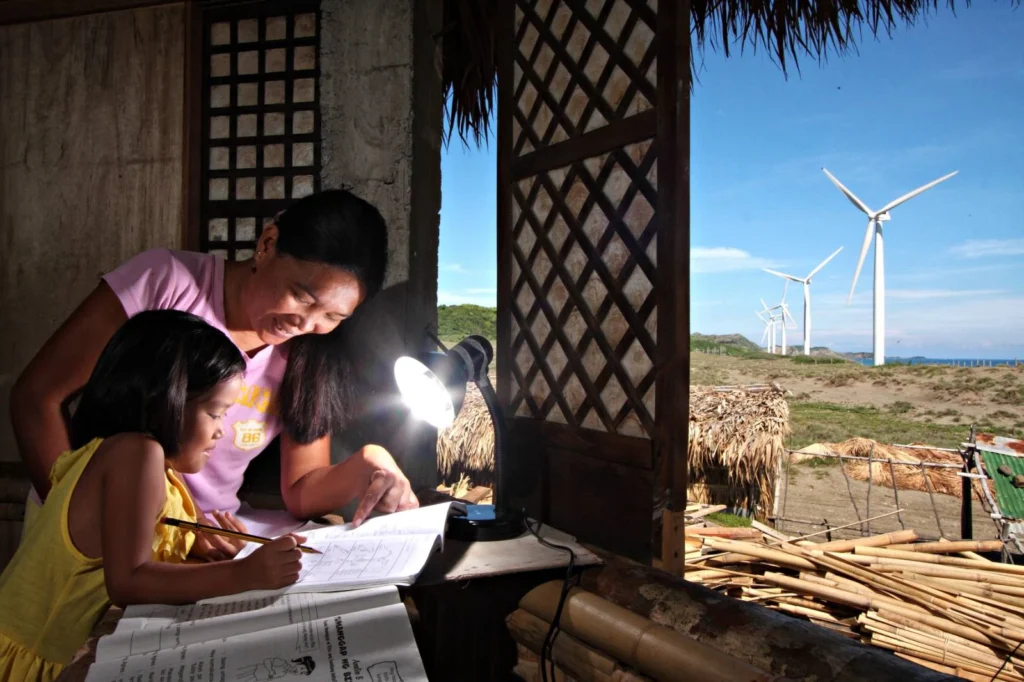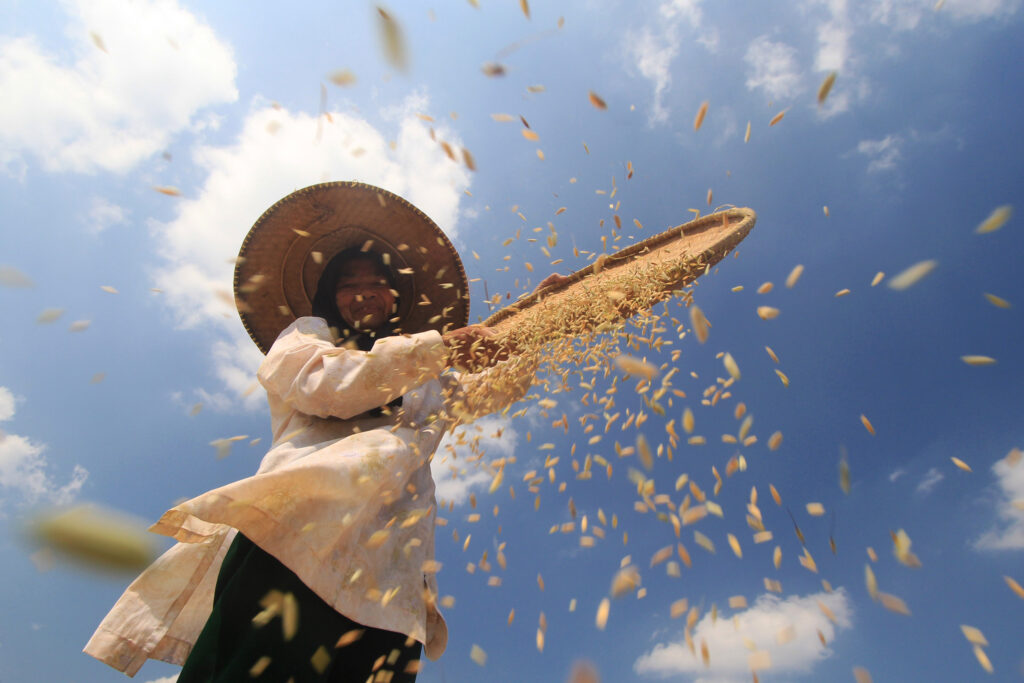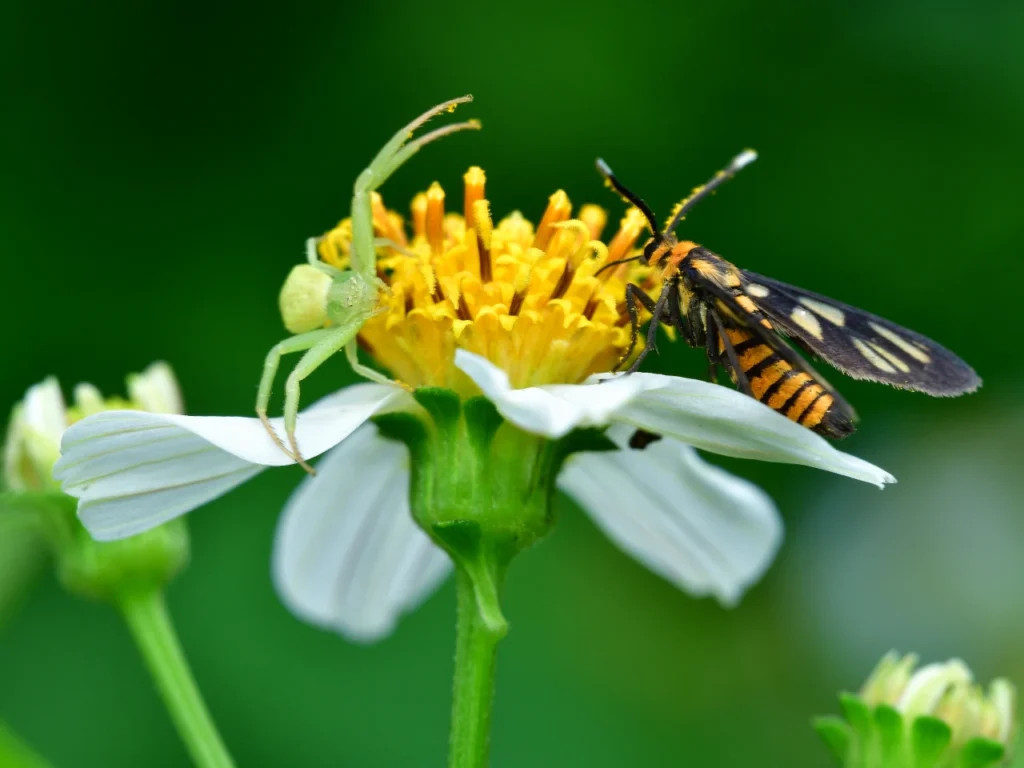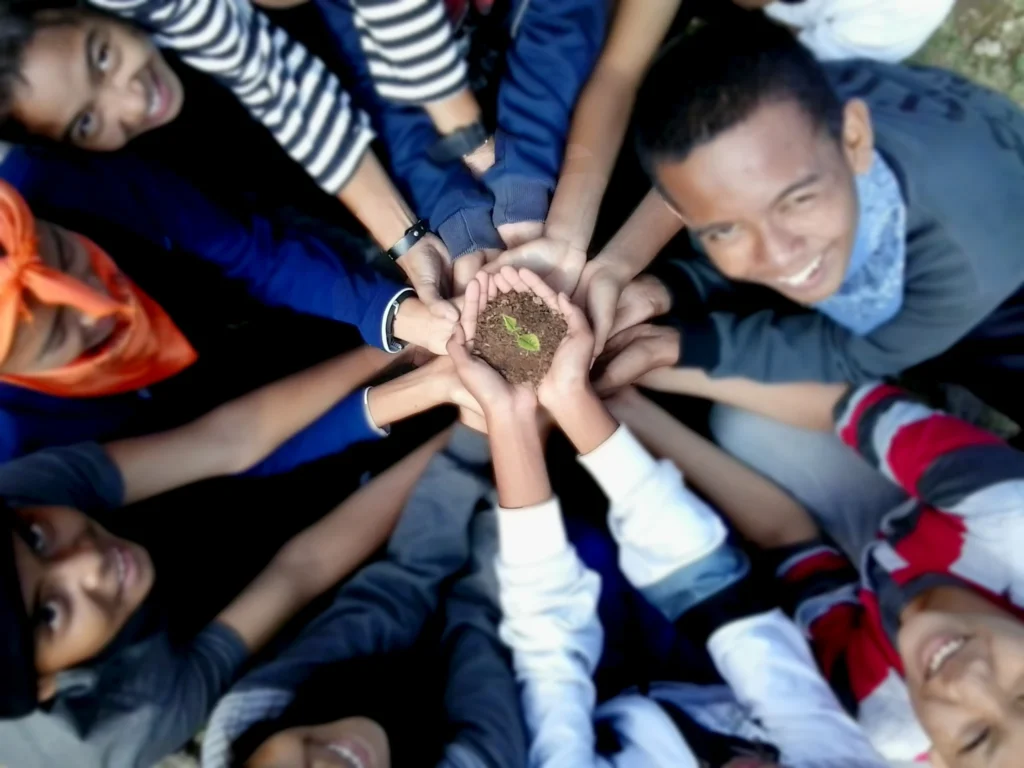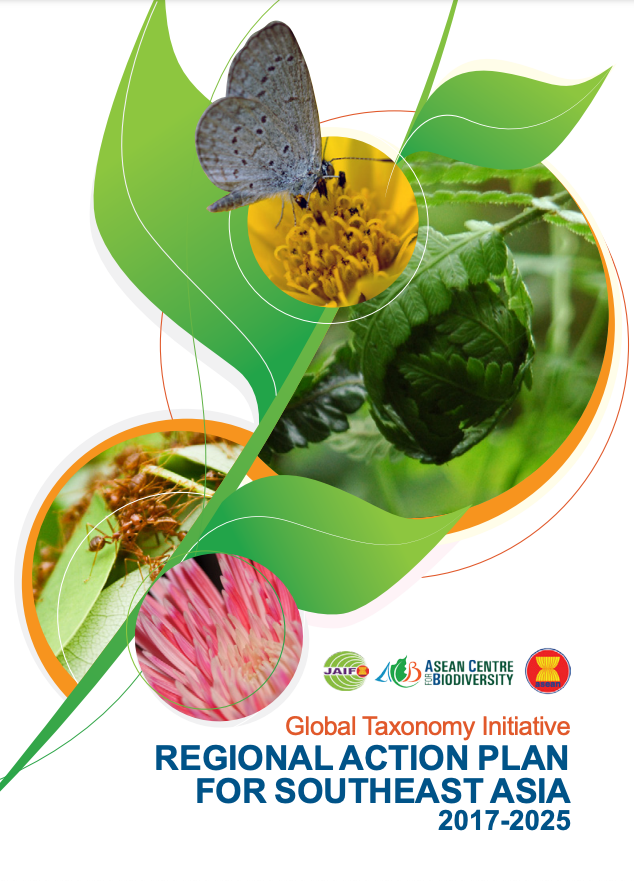The ASEAN Member States have long recognized the value of protecting and supporting ecosystems and biodiversity in the region. All member countries have taken actions to protect biodiversity through various national legislations and policies. Moreover, the AMS are Parties to multilateral environmental agreements such as the Convention on Biological Diversity, the Convention on International Trade in Endangered Species of Wildlife Fauna and Flora, World Heritage Convention (WHC), United Nations Framework Convention on Climate Change (UNFCCC), Ramsar Convention on Wetlands (except Brunei Darussalam and Singapore), and the United Nations Educational, Scientific, and Cultural Organization (UNESCO) Man and Biosphere (MAB) Programme (except Brunei Darussalam and Singapore).
Consistent with the ASCC Blueprint 2025 key result area of “Conservation and Sustainable Management of Biodiversity and Natural Resources”, the ACB will enhance its support to ASEAN Member States in their efforts to conserve biodiversity. Efforts will focus on the following: (i) Protected Areas Management and Other Effective Area-Based Conservation Measures (OECM); (ii) Species Conservation; (iii) Invasive Alien Species (IAS) Prevention and Management; (iv) Ecosystem Restoration; (v) Coastal and Marine ecosystem; and (vi) Access and Benefit Sharing (ABS).
- Protected Area Management and Other Effective Area-based Conservation Measures (OECM)
- Improved implementation of the ASEAN Heritage Parks Programme
The ASEAN Heritage Parks Programme represents a unique set of national parks and wildlife reserves in the ASEAN region noted for their unique biodiversity, ecosystems, and outstanding values and as representatives for regional and global conservation efforts. As the Secretariat to the ASEAN Heritage Parks Programme, the ACB will continue to promote the ASEAN Heritage Parks and improve the implementation of the AHP Programme through the following:
- ensure that the AHP Programme covers a complete spectrum of representative ecosystems of the ASEAN region;
- develop standards to monitor management effectiveness of AHPs and shape the distinction of AHP designation. The monitoring and evaluation system of AHPs will be enhanced to determine the state of management and serve as basis in determining the appropriate support for the parks; and
- enhance the regional mechanism for sharing best practices for AHPs. The existing regional platform will be enhanced to further facilitate sharing and learning among AHPs, which include the conduct of AHP Committee Meetings every two (2) years and the AHP Conference every three (3) years.
- ensure that the AHP Programme covers a complete spectrum of representative ecosystems of the ASEAN region;
- Improved Protected Area Management and Coverage
To enhance protected area management in ASEAN, the ACB will:
- facilitate the identification of potential new terrestrial and coastal and marine protected areas;
- facilitate the development and updating of PA management plans through a multistakeholder participatory process; and
- support the implementation of priority/strategic activities identified in the management plans especially those that are aligned with national biodiversity targets.
- facilitate the identification of potential new terrestrial and coastal and marine protected areas;
- Transboundary Protected Area
To facilitate cooperation in transboundary protected areas, the ACB will:
- support the effective management of transboundary protected areas (TBPA) through functional institutional structures for transboundary biodiversity conservation and management;
- support the development and preparation of a TBPA management plan and a business plan to ensure financial sustainability of park management; and
- facilitate joint cooperation in transboundary conservation areas.
- support the effective management of transboundary protected areas (TBPA) through functional institutional structures for transboundary biodiversity conservation and management;
- Other Effective Area-Based Conservation Measures
An OECM refers to a geographically defined area, other than a Protected Area, which is governed and managed in ways that achieve positive and sustained long-term outcomes for the in situ conservation of biodiversity, with associated ecosystem functions and services and where applicable, cultural, spiritual, socio–economic, and other locally relevant values (CBD COP 14). OECMs and protected areas both result in the long-term and effective in situ conservation of biodiversity. To this end, the ACB will:
- facilitate regional discussions that will contribute to defining OECMs in the ASEAN context and further shape the global definition of OECMs; and
- facilitate the identification of other effective area-based conservation measures in the ASEAN, including innovations that contribute to increasing areas allocated to biodiversity conservation.
- facilitate regional discussions that will contribute to defining OECMs in the ASEAN context and further shape the global definition of OECMs; and
- Improved implementation of the ASEAN Heritage Parks Programme
- Species Conservation
Illegal trade in wildlife contributes to the continued decrease in populations of wild animals and plants species in the ASEAN region, such as elephants, tigers, rhinos, pangolins, and rosewood. Unsustainable use and illegal trade of wildlife hamper opportunities for economic growth. The ASEAN has committed to step up efforts to take continuous and concrete steps to strengthen cooperation in addressing the illegal wildlife trade in the region. To enhance the conservation of vulnerable and threatened species in ASEAN and prevent their extinction, the ACB will:
- facilitate the inventory of vulnerable, threatened, and endangered species in the ASEAN, which will include the compilation of baseline information and status review of endangered land, freshwater, and marine species; assessment of current conservation efforts and gaps within ASEAN; and mapping of distribution of these species including overlaps and strongholds;
- facilitate the development and implementation of the ASEAN action plan on species conservation;
- support the establishment of a functional regional network to strengthen cooperation and facilitate cross-sectoral collaboration with the ASEAN Working Group on CITES and Wildlife Enforcement (AWG-CITES & WE) on wildlife enforcement and the implementation of the ASEAN Action Plan; and
- conduct capacity building activities on taxonomy consistent with the Global Taxonomy Initiative (GTI) and data curation.
- facilitate the inventory of vulnerable, threatened, and endangered species in the ASEAN, which will include the compilation of baseline information and status review of endangered land, freshwater, and marine species; assessment of current conservation efforts and gaps within ASEAN; and mapping of distribution of these species including overlaps and strongholds;
- Invasive Alien Species Prevention and Management
Invasive alien species represent one of the primary threats to biodiversity and pose increasing risks due to expanding global trade, transport, tourism, and climate change. The ACB will support actions to mitigate the impacts of invasive alien species that threaten ecosystems, habitats, or species and will facilitate collaboration to prevent the introduction and spread of invasive alien species through the following:
- facilitate the assessment of the status of IAS (terrestrial, freshwater, and marine) in the ASEAN region;
- provide a regional platform to strengthen mechanisms for transboundary cooperation for IAS and serve as a venue to exchange knowledge and information and share experiences, including good practices, on national regulatory frameworks, identification of IAS, potential vectors, and new technologies, among others;
- facilitate regional action to control the invasion of selected alien species in ASEAN and avoid unintentional introductions of IAS through ASEAN Action Plan for IAS Management; and
- continue to maintain the IAS database including information on their modes of introduction as an early warning system for AMS to either prevent their entry and/or control their spread in the ASEAN region.
- facilitate the assessment of the status of IAS (terrestrial, freshwater, and marine) in the ASEAN region;
- Ecosystem Restoration
In line with the UN Decade on Ecosystem Restoration 2021–2030, the ACB will support actions to scale up restoration of degraded and destroyed ecosystems as a proven measure to fight the climate crisis and enhance food security, water supply, and biodiversity. Ecosystems and biodiversity contribute to sustainable development while reducing environment-related risks. To support ecosystem restoration in the ASEAN, the ACB will:
- develop a regional map on degraded ecosystems such as coral reefs, seagrass beds, mangroves, forests, inland waters, grasslands, peatlands, and others; and
- provide support to AMS in the design and implementation of pilot initiatives and programmes to support scaling-up of national, regional, transboundary efforts in ecosystem restoration.
- develop a regional map on degraded ecosystems such as coral reefs, seagrass beds, mangroves, forests, inland waters, grasslands, peatlands, and others; and
- Coastal and Marine Ecosystems
Coastal and marine ecosystems are threatened by human activities such as fishing and transportation, effects of waste disposal, and excess nutrients from agricultural runoff. Marine debris, particularly plastic pollution, have to be avoided or mitigated to reduce impacts on marine and coastal biodiversity. To promote actions to protect coastal and marine biodiversity, the ACB will:
- support the implementation of the ASEAN Framework of Action on Marine Debris;
- facilitate discussions on threats to marine biodiversity, such as marine litter, habitat and species loss, and climate change impacts, and mobilise region-wide initiatives in the coastal and marine areas of the ASEAN to address these threats; and
- increase marine conservation through networks of marine protected areas, including the ASEAN Heritage Parks.
- support the implementation of the ASEAN Framework of Action on Marine Debris;
- Access and Benefit Sharing
The fair and equitable sharing of benefits arising from the utilisation of genetic resources contributes to the conservation and sustainable use of biological diversity and poverty alleviation. Genetic resources, including traditional knowledge associated with genetic resources held or owned by indigenous peoples and local communities (IPLCs), are also important for food security, public health, and biodiversity conservation. The ACB will promote capacity building measures on access and benefit sharing, including the implementation of the Nagoya Protocol on Access to Genetic Resources and the Fair and Equitable Sharing of Benefits Arising from their Utilization, through the following:
- increase awareness of the AMS on access and benefit sharing;
- develop the capacity of AMS to formulate and effectively implement national ABS frameworks; and
- facilitate the development of a suitable traditional knowledge digital library
- increase awareness of the AMS on access and benefit sharing;























